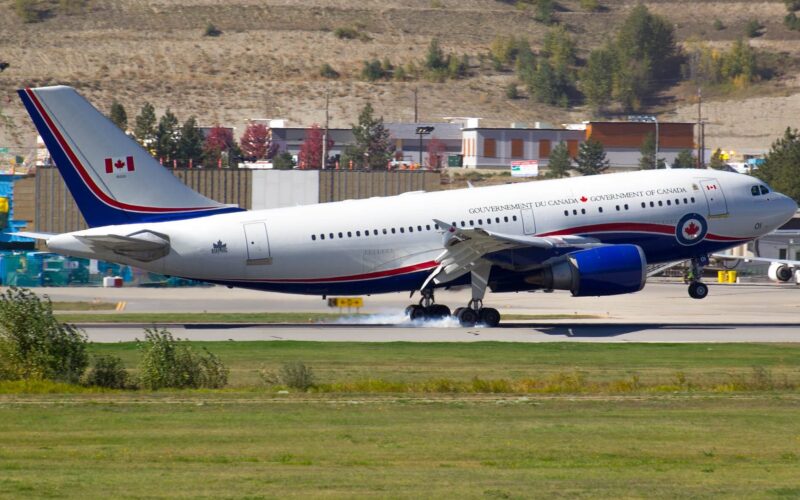The investigation into the incident that led one of the Canadian governmental planes to hit a wall in October 2019 points to the use of faulty equipment and insufficient training of towing staff.
The Royal Canadian Air Force (RCAF) waited until December 2, 2019, to reveal what happened to the official “Can Force One”. On October 19, 2019, the Airbus CC-150-01 Polaris, which usually transported the Canadian Prime Minister, was damaged during a towing operation in the Canadian Forces Trenton Base in Ontario. The base houses the 437 Transport Squadron that operates the governmental fleet. An investigation to identify the causes of the incident was opened.
The report reveals a series of mistakes. The L3Harris crew in charge of towing chose to park the aircraft in a non-regular hangar (number 10). Because of that decision, the towing vehicle had to be changed “from the bigger D-14 to the smaller D-12”, as the former was too big to operate inside of hangar 10.
As the ‘Can Force One’ arrived in front of the hangar, the crew engaged the parking brake and installed chocks under its gears, before disconnecting the tow tractor. “During the tow tractor change, the aircraft started moving forward and jumped over the chocks,” the report reads. The 30-year-old plane hit the towing tractor with one of its engines before ending its course nose-first against the wall of the hangar.
The aircraft sustained serious damage (“C” category) to the nose and right engine cowling and one of the workers suffered a minor injury. At the time of the incident, Airbus inspectors that assessed the damage concluded the aircraft would not return to operations before August 2020.

Credit: Royal Canadian Air Force
“The investigation could not positively determine the cause for the parking brake not holding the aircraft in position,” states the report. “However, it was found that the chocks used to secure the aircraft were not authorized in the Technical Support Arrangement and not all wheels had chocks at the time of the accident.” It concludes by saying that “brakeman training was found to be informal and lacking emergency procedures and reference to aircraft publications” and recommends better training and the use of approved equipment.
The government has asked L3Harris to pay the repair costs “as the aircraft was in their care and custody when the accident occurred,” Defense Department spokesman Daniel Le Bouthillier told the Canadian Press.
The five CC-150s that compose Canada’s governmental fleet started their lives as regular Airbus A310 with the late Canadian carrier Wardair between 1987 and 1988. They were acquired by the Canadian government in 1994 and converted for official operations. The CC-150-01 was turned into a VVIP transport (the “Taj Mahal”, as described by former prime minister Jean Chrétien). Another two are regular troop and cargo transporters. As for the fourth and fifth airframes, they were both converted into mid-air refuellers, based on the A310MRTT.

